Pallet Inverter Safety Tips for Germany Plants Facing Precision Automation in Lean Manufacturing Plants
Your German plant is a model of efficiency. You are pushing the boundaries of lean manufacturing and precision automation. But as you integrate powerful machinery like pallet inverters, a new and serious concern appears. A single safety oversight can bring your entire high-tech production line to a halt, causing costly downtime, facing strict regulatory fines, and damaging the reputation you have worked so hard to build. The pressure to maintain both productivity and perfect safety is immense. The solution is not to avoid automation, but to master its safety. It requires a strategy that embeds safety into the core of your operations, satisfying Germany's tough standards while boosting your lean goals. I have built my career on this principle, and I want to share how you can achieve it.
The most effective pallet inverter safety tips for German plants involve a multi-layered approach. This includes selecting CE-marked machinery that meets ISO 13849-1 standards, implementing robust physical guarding like safety fences, and integrating advanced protective devices such as light curtains and area scanners. Crucially, this hardware must be supported by strict Lockout-Tagout (LOTO) procedures for all maintenance and comprehensive, role-specific operator training that aligns with German Berufsgenossenschaft (BG) regulations.
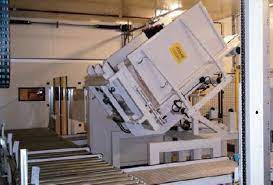
These points are the foundation of a safe and efficient system. But true integration into a modern, lean plant requires a deeper understanding. We need to look at how these elements work together. It is about building a complete safety culture, not just checking boxes on a compliance list. Let’s break down the key areas you need to focus on to protect your people and your investment.
How Can We Align Pallet Inverter Safety with Germany's Strict Regulations?
I often speak with plant owners in Germany who feel overwhelmed by the web of safety regulations. They see the rules from bodies like the Berufsgenossenschaft (BG) and worry that compliance will be a complex and expensive roadblock. This worry is understandable. A missed detail or a misinterpretation can lead to failed inspections, forced shutdowns, and costly retrofits on brand-new equipment. The fear is that the very rules designed to protect you will instead slow you down. But there is a better way. I have learned that the key is to be proactive. By understanding the core requirements and choosing equipment designed for compliance from the very beginning, you can turn these regulations from a burden into a blueprint for a safer, more efficient factory.
To align pallet inverter safety with Germany's strict regulations, you must start with a machine that has a valid CE marking and a full Declaration of Conformity. This proves it meets the EU Machinery Directive. Next, you must ensure all safety components, like light curtains and emergency stops, achieve the required Performance Level (PLr) as determined by your ISO 13849-1 risk assessment. Finally, all steps must be documented to satisfy local bodies like the BG.
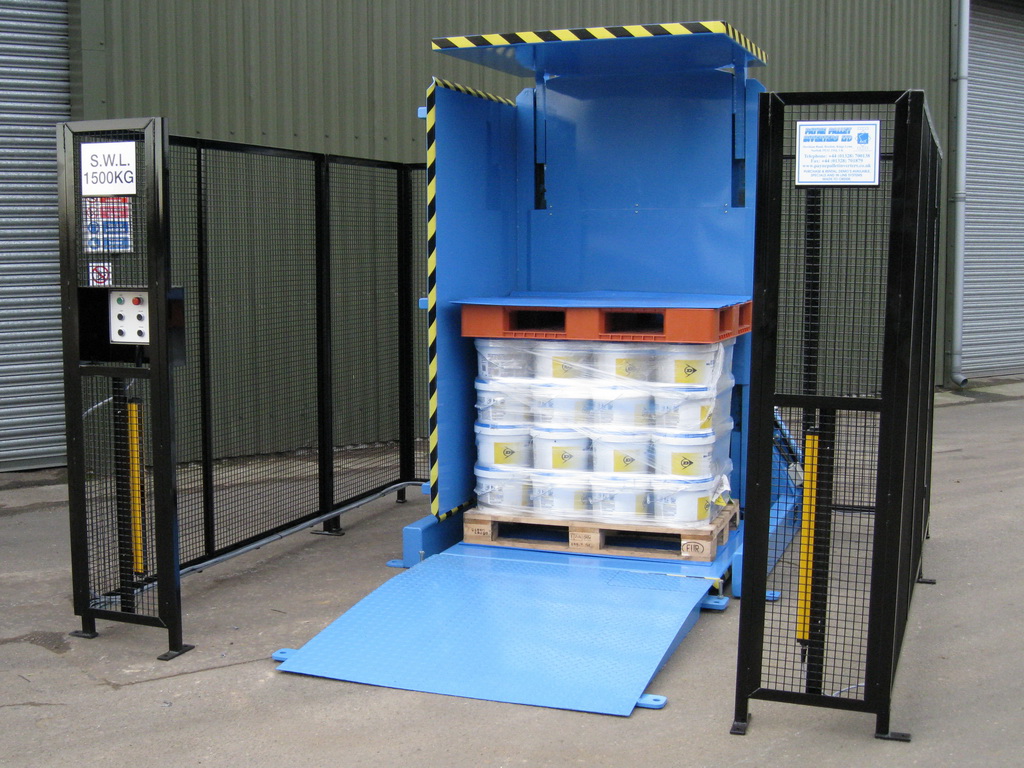
Decoding Key German Safety Standards
When I first started my own factory, navigating these standards felt like learning a new language. But it boils down to a few core concepts. For a CEO like you, Javier, who values clear analysis, understanding these pillars is crucial for making smart investment decisions.
- Machinery Directive 2006/42/EC: This is the foundation for machine safety in the EU, including Germany. The CE mark on your pallet inverter is the manufacturer's promise that the machine complies with this directive. Never consider a machine without it. It's your first and most important checkpoint.
- ISO 13849-1 (Performance Levels): This standard is about reliability. It asks, "How likely is a safety system to fail?" It uses a rating called Performance Level (PL), from PLa (lowest) to PLe (highest). A risk assessment determines the required PL (PLr) for each safety function. For example, an emergency stop on a powerful pallet inverter will demand a high PLr, like PLd or PLe. A supplier should be able to provide the PL data for all their safety circuits.
- Berufsgenossenschaft (BG) Regulations: These are the German trade association rules. They often provide very specific, practical guidelines for industries like steel manufacturing. They are not just suggestions; they are enforced. Complying with BG rules for machine guarding and operation is essential for passing inspections.
The Power of a Formal Risk Assessment
A risk assessment isn't just paperwork. It is the strategic plan for your safety system. It's a logical process that I have used on every single installation project. It turns "what if" into a concrete action plan.
- Identify Hazards: Where can someone get hurt? This includes crushing zones, moving parts (clamping plates, rotating base), and electrical hazards.
- Analyze and Evaluate Risks: For each hazard, how severe could the injury be, and how often could it happen? This analysis determines the required Performance Level (PLr).
- Implement Control Measures: This is where you choose your tools. You install safety fences, light curtains, emergency stop buttons, and two-hand controls. The measures must match the risk level you identified.
Here is a simple way to look at how risks translate to safety measures. This is the kind of analysis you should demand from any potential equipment partner.
| Identified Risk | Potential Harm | Required Performance Level (PLr) | Common Safety Solution |
|---|---|---|---|
| Operator entering the machine area during a cycle | High (Crushing) | PLd or PLe | Safety light curtain with muting for pallet entry/exit |
| Uncontrolled movement during maintenance | High (Crushing, Shearing) | PLd | Lockout-Tagout (LOTO) procedure, interlocked access gates |
| Hydraulic hose failure | Medium (Fluid injection, Load drop) | PLc | Hose burst protection valves, regular inspection schedule |
| Emergency stop failure | High (Inability to stop) | PLd or PLe | Dual-channel, monitored E-Stop circuit |
By approaching regulations this way, you are not just complying. You are engineering a safer environment from the ground up. This is the path to stability and peace of mind.
What Are the Key Safety Risks in Integrating Pallet Inverters into an Automated Lean Line?
You have invested heavily in creating a lean, automated production line. AGVs glide across the floor, conveyors move materials seamlessly, and everything is designed for maximum flow. But introducing a powerful pallet inverter can create new, unexpected dangers right where these systems meet. The very integration that promises efficiency can become a safety blind spot. I've seen it happen. A perfectly programmed AGV path intersects with the swing area of an inverter, or an operator takes a shortcut through a gap they thought was safe. These interface points are where accidents happen, and they can completely wipe out the productivity gains you worked so hard for. The goal is to design a system where automation and safety support each other, creating a truly seamless and secure workflow.
The key safety risks when integrating pallet inverters into an automated line are the hazardous interfaces between machines (like AGVs or conveyors), the potential for crushing and shearing in compact, lean layouts, and software failures that can cause unexpected machine behavior. Mitigation requires integrated safety PLCs, 3D area scanners to create intelligent safe zones, and robust communication protocols between all automated systems.
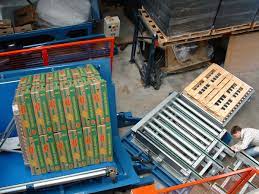
Managing Human and Machine Interaction Points
In a modern plant, the lines between automated zones and human workspaces are blurring. This is the biggest challenge. A pallet inverter needs a designated operating area, but this area must also interact with the rest of your factory.
- Intelligent Zoning: The solution is not just a simple fence. Modern safety uses technology to create dynamic zones. We use laser area scanners (not just simple light curtains). These scanners can create warning zones and stop zones. An AGV approaching the pallet inverter can trigger a 'warning' signal, causing the inverter to hold its next cycle. If the AGV or a person crosses a second, inner line, it triggers an immediate 'stop' command. This is far smarter and more flexible than a physical gate.
- Muting for Productivity: In a lean line, you cannot stop the flow every time a pallet enters or leaves the inverter. This is where "muting" is critical. Muting sensors temporarily and automatically disable the light curtain for a pallet to pass through, but not for a person. This requires a sophisticated setup with multiple sensors to confirm the shape and speed of the object. A poorly configured muting system is a major safety risk, so it must be done by experts.
Ensuring Software and Control System Integrity
Your precision automation relies on software. If that software fails, the results can be catastrophic. A pallet inverter is a heavy, powerful machine. An unexpected movement due to a software glitch is a nightmare scenario. This is why control system safety is non-negotiable.
- Fail-Safe by Design: The core principle is that the control system must be "fail-safe." This means if any component fails—a sensor, a wire, or the PLC itself—the machine must default to a safe state, which is usually 'stopped'. This is achieved with dual-channel safety circuits and specialized safety PLCs that constantly check themselves and their inputs.
- Integrated Safety PLC: In an automated line, you should not have separate safety systems for the conveyor, the AGV, and the pallet inverter. They must all talk to each other. A master safety PLC should control the entire zone. If an operator hits an E-stop on the conveyor line, it must also stop the pallet inverter and any AGVs heading towards it. This unified control is a pillar of Industry 4.0 safety.
This table outlines how to think about these integrated risks and their modern solutions.
| Integration Risk | Traditional Solution | Modern Lean / Automated Solution | Benefit |
|---|---|---|---|
| AGV entering inverter cell | Physical gate | 3D area scanner with Warning/Stop zones | Uninterrupted flow, higher productivity |
| Operator access for quality check | Stop line, restart manually | Light curtain with muting for access points | Safe access without full system shutdown |
| Control system communication error | Separate, isolated systems | Integrated Safety PLC with universal protocol (e.g., PROFIsafe) | System-wide emergency stop, full visibility |
| Pallet misalignment on entry | Mechanical guides | Vision system confirms pallet position before cycle starts | Prevents jams, equipment damage, and unsafe loads |
By addressing these integration points with modern technology, you ensure that your investment in automation pays off in both productivity and, most importantly, the safety of your people.
How Does Proactive Maintenance Enhance Both Safety and Uptime for Pallet Inverters?
As a steel mill owner, you know the cost of downtime. An idle machine is a liability. This is especially true for aging equipment, where the risk of a sudden breakdown is always present. But a component failure on a pallet inverter is more than just a production delay; it is a serious safety event. A worn hydraulic hose that bursts or a safety switch that fails to activate can lead directly to an accident. This is like a ticking clock in your factory. I have always believed that the best way to fix a problem is to prevent it from happening. Shifting from a reactive "fix it when it breaks" model to a proactive maintenance schedule is one of the most powerful changes you can make. It will keep your machines running reliably, hitting that 95% uptime goal, and ensure your safety systems are always ready to protect your team.
Proactive maintenance boosts safety and uptime by systematically inspecting, servicing, and replacing critical components before they can fail. This includes regular functional tests of all safety circuits (E-stops, light curtains), analysis of hydraulic fluid, and checks for structural wear. This approach prevents both accidents caused by component failure and the unplanned downtime that cripples productivity.
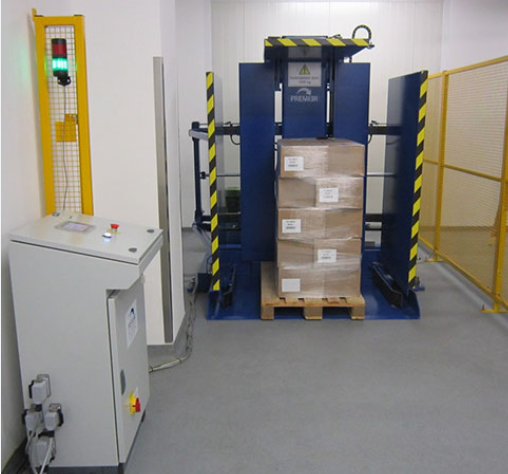
Building a Predictive Maintenance Schedule
For a leader focused on data and digital transformation, a simple checklist is not enough. The future of maintenance is predictive. It uses data to tell you when a part needs attention. This is a core part of building a smart factory.
- Go Beyond the Calendar: A traditional schedule says, "replace hydraulic hoses every 2 years." A predictive approach says, "this sensor detects increased vibration and temperature in the hydraulic pump, indicating a potential failure is 3 weeks away." This allows you to schedule repairs during planned downtime, not in the middle of a critical production run.
- Leverage IoT Sensors: This is where your goal of deploying IoT sensors pays huge dividends. We can equip a pallet inverter with vibration sensors on motors, temperature sensors on the hydraulic power pack, and cycle counters. This data feeds into your MES or a data analysis platform. Over time, your system learns what "normal" looks like and can automatically flag deviations that signal a developing problem. This is the practical application of big data you are aiming for.
Critical Safety Component Checks
While predictive data is powerful, it must be combined with rigorous, hands-on checks of the systems that directly protect your people. These checks must be part of your daily, weekly, and monthly routines.
- Daily Checks: The operator should perform a quick function test before their shift. This includes activating the light curtain to see if it stops the machine and pressing an E-stop button. It takes 30 seconds but can prevent a disaster.
- Weekly Checks: A more detailed inspection of the safety hardware. Check for loose wiring on safety switches, cracked lenses on light curtains, and clear markings on all safety controls.
- Monthly/Annual Checks: This is a deeper dive for the maintenance team. It involves testing the safety relays in the control panel, inspecting hydraulic hoses for wear and tear, checking the torque on structural bolts, and examining welds for any signs of stress or fatigue.
A structured maintenance plan for a pallet inverter might look like this:
| Frequency | Task | Performed By | Goal |
|---|---|---|---|
| Daily | - Test light curtain function - Test one E-stop button - Visual check for leaks |
Operator | Confirm basic safety functions are working |
| Weekly | - Test all E-stop buttons - Inspect safety fence and gates - Clean light curtain lenses |
Maintenance Tech | Ensure physical guards and sensors are intact and functional |
| Monthly | - Check hydraulic fluid level & quality - Inspect chains and sprockets for wear - Verify safety interlock switch function |
Maintenance Tech | Prevent mechanical failures |
| Annually | - Full test of the safety control circuit by a qualified technician - Detailed inspection of all welds and structural components - Replace worn hydraulic hoses based on age or condition |
Certified Technician | Deep system integrity check, full compliance verification |
This disciplined approach transforms maintenance from a cost center into a strategic tool. It directly supports your goals of higher uptime, lower operating costs, and, above all, a safe working environment.
What Training Protocols are Essential for Safe Pallet Inverter Operation in a Modern Plant?
I can provide you with the most advanced, safest pallet inverter in the world. It can have redundant safety circuits, intelligent scanners, and fail-safe controls. But if the person operating it is not properly trained, all that technology can be compromised. An operator who does not understand why a safety feature exists may be tempted to bypass it to save a few seconds. A maintenance technician who does not follow the correct power-down procedure can put themselves and others in extreme danger. Your people are the most important part of your safety system. This is why I believe that comprehensive, ongoing training is not an option; it is an essential investment. It is the final, critical link that ensures your technology and your team work together safely and effectively.
Essential training protocols for pallet inverters must be role-specific. Operators require hands-on training for normal operation and a deep understanding of every safety feature's purpose. Maintenance staff need specialized training on Lockout-Tagout (LOTO) procedures for safe de-energization. All personnel must participate in regular refresher courses and emergency drills to ensure safety knowledge remains current and practical.
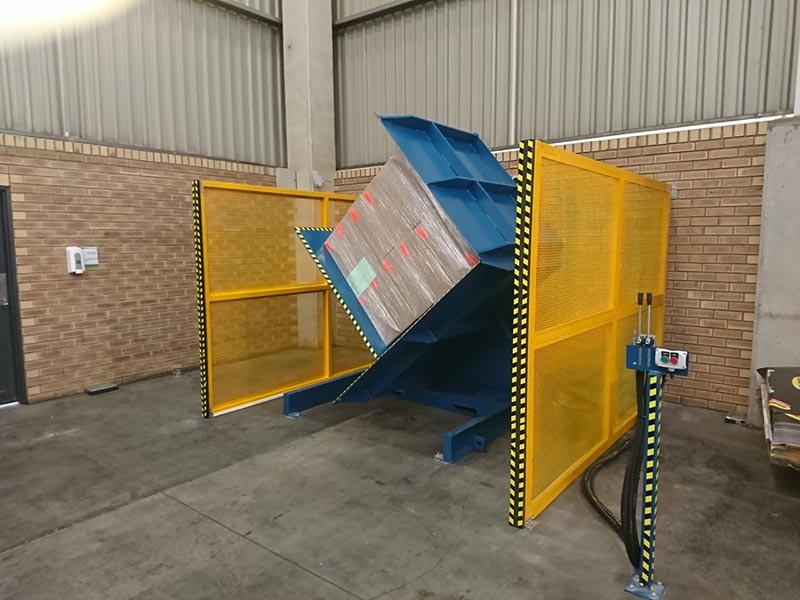
Differentiating Operator vs. Maintenance Training
A one-size-fits-all training program does not work. The person who runs the machine every day has different needs from the person who fixes it once a month. Acknowledging this is the first step to effective training.
- Operator Training: This focuses on the "what" and "why." What does this button do? Why is this light curtain here? Operators must understand the normal operating sequence perfectly. They must also know exactly what to do when something goes wrong—how to use the E-stop, how to report a fault, and why they should never, ever enter the safety zone while the machine is powered on. Their training should include recognizing signs of trouble, like unusual noises or jerky movements, and reporting them immediately.
- Maintenance Training: This focuses on the "how." How to safely de-energize the machine? How to release stored energy (like hydraulic pressure)? How to perform repairs without creating new hazards? This training is much more technical and must include detailed instruction on your plant’s specific Lockout-Tagout procedure. They are the only ones who should ever be behind the safety fence while the machine is being serviced.
The Non-Negotiable Rule: Lockout-Tagout (LOTO)
If there is one safety procedure I have insisted on at every factory I have ever worked with, it is LOTO. It is a simple concept that saves lives. When a machine needs service, it is not enough to just turn it off. LOTO ensures that it cannot be turned back on by accident while someone is working on it.
- Isolate Energy: The machine must be disconnected from its power source (electrical, hydraulic, pneumatic).
- Lock and Tag: The maintenance technician places their personal lock on the energy isolation device. Their tag has their name and photo.
- Verify: The technician then tries to start the machine to prove that it is truly de-energized before beginning work.
The machine cannot be restarted until the person who placed the lock removes it. If multiple people are working, each person places their own lock. It is a powerful physical guarantee of safety.
Here is a sample training matrix you could implement in your plant:
| Role | Training Module | Frequency | Assessment Method |
|---|---|---|---|
| Operator | - Normal Operation - Safety Feature Identification - Emergency Procedures |
Initial + Annual Refresher | Written Test & Practical Demo |
| Maintenance Tech | - All Operator Modules - Full LOTO Procedure - Hydraulic/Electrical Safety |
Initial + Annual Refresher | Written Test & Practical LOTO Demo |
| Shift Supervisor | - All Operator Modules - LOTO Audit Procedure - Accident Investigation |
Initial + Bi-Annual Refresher | Scenario-Based Test |
| AGV Operator | - Safe Zone Awareness - Pallet Inverter Interface Rules |
Initial + As Needed | Observation |
Training is not a one-time event. It is a continuous process. By investing in your people's knowledge, you are building the strongest safety shield a plant can have.
My Insights
I remember my early days as an engineer on the factory floor. I saw firsthand how a machine breakdown could not only stop production but also put my colleagues at risk. Later, when I built my own factory, those memories stuck with me. I knew that to be successful, to achieve the financial independence that this industry has given me, I couldn't just focus on output. I had to build a foundation of safety and reliability.
Javier, your journey from team leader to the owner of a major steel mill is one I deeply respect. You understand the business from the ground up. You know the pressure of energy costs, the challenge of aging equipment, and the constant need to innovate. You are not just looking for a machine vendor; you are looking for a partner who understands these challenges.
That is why my mission with SHJLPACK is not just to sell equipment. It is to share the knowledge I have gained over 25 years. When we talk about pallet inverter safety in a high-tech German plant, we are not just talking about guards and sensors. We are talking about the core of operational excellence.
I believe safety is not a cost. It is an enabler. You cannot achieve your goal of 95% uptime if your machines are unsafe and break down. You cannot reach your goal of an 8% cost reduction if you are dealing with accidents and downtime. The proactive maintenance, the integrated safety systems, the rigorous training—these are the very things that make your lean automation and digital transformation possible. They are the investments that provide the highest return: a safe team, a stable operation, and a profitable business. My goal is to be the partner who helps you put that knowledge into practice.
Conclusion
Ultimately, integrating a pallet inverter safely is about a complete strategy. It combines smart engineering, strict processes, and well-trained people to build a truly secure and productive automated environment.



